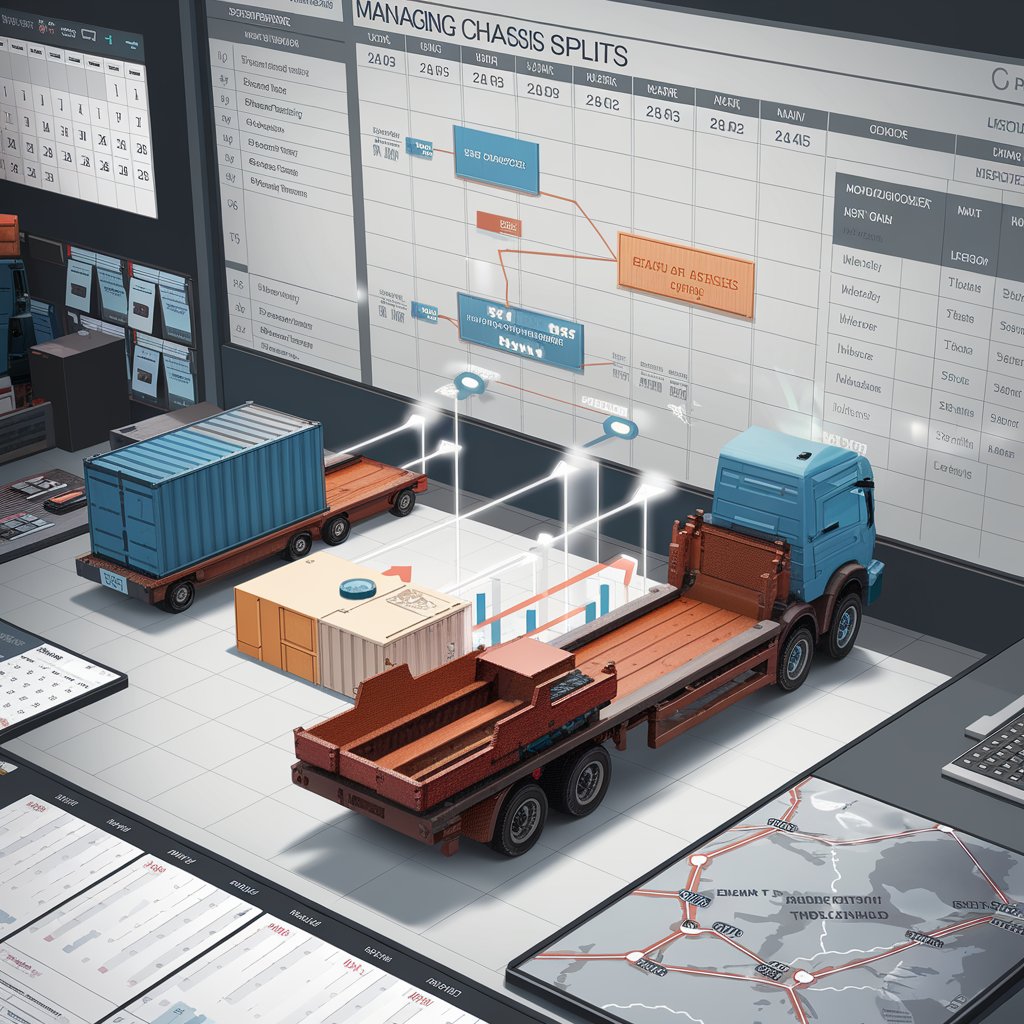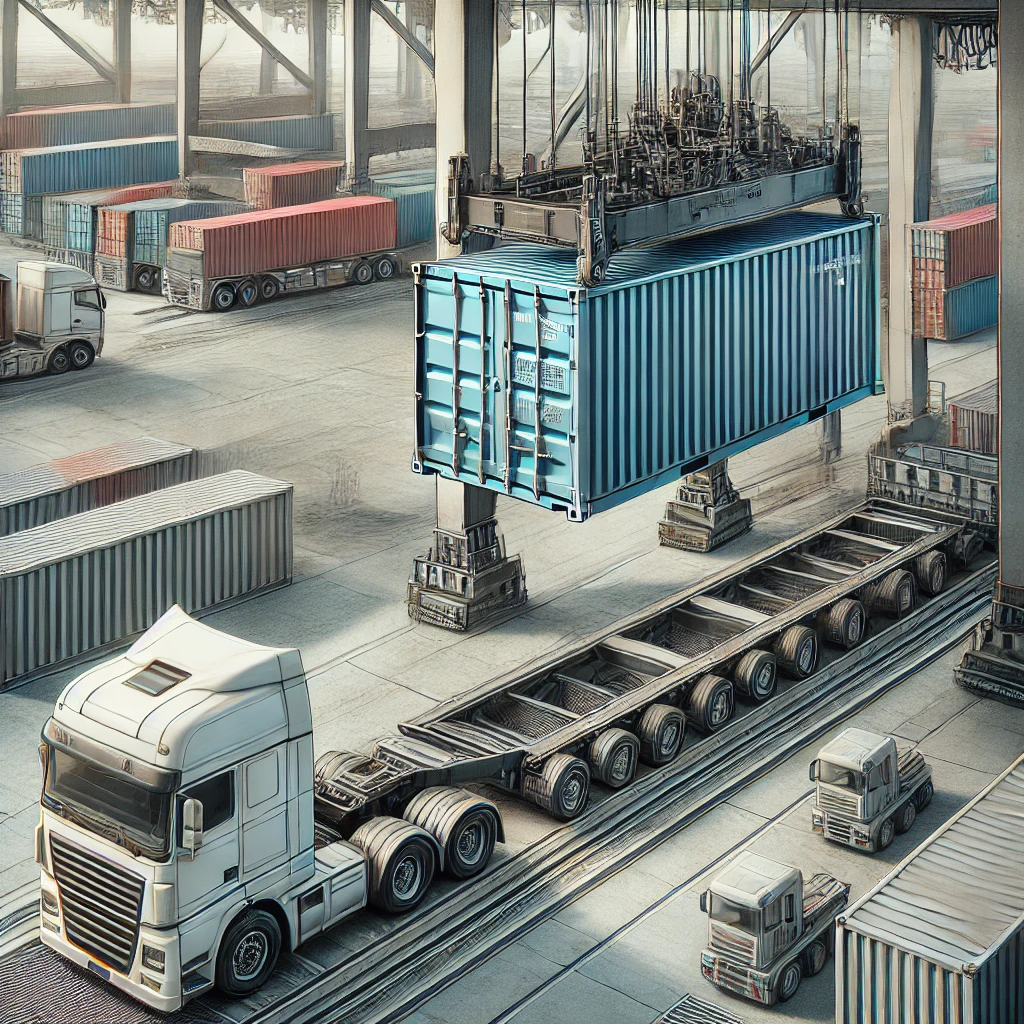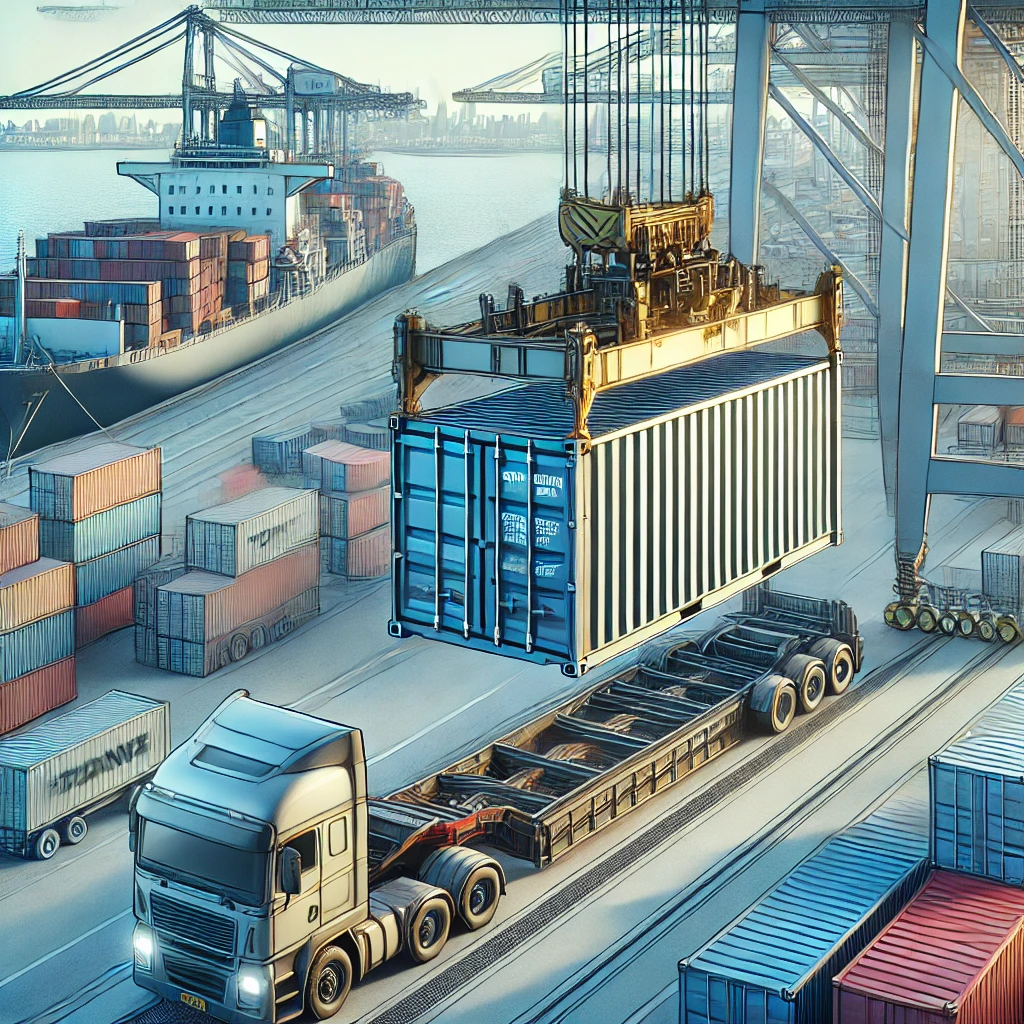Chassis Split: A Comprehensive Guide to Understanding Chassis Splits in Shipping and Logistics

What is a Chassis Split?
To understand what a chassis split is, we first need to break down the components involved.
Defining Key Terms
- Chassis: A chassis is a specialized trailer or undercarriage used to transport shipping containers over the road.
- Container: A large, standardized box used to transport goods via various modes of transportation (ship, rail, truck).
Chassis Split Definition
A chassis split occurs when a container and its chassis are separated at some point during the transportation process. This typically happens when:
- A container is taken off a chassis at a port or rail yard.
- The chassis is used for another container.
- The original container is later placed on a different chassis for further transportation.
The Importance of Understanding
Chassis splits are a significant aspect of container logistics for several reasons:
- Cost Implications: Often incur additional fees.
- Time Management: They can affect the overall transit time of goods.
- Operational Efficiency: Understanding is crucial for optimizing logistics operations.
Meaning in Different Contexts
The term “chassis split” can have slightly different meanings depending on the context:
In Port Operations
At ports, might refer to the process of separating containers from chassis to optimize space and equipment usage.
In Inland Transportation
For trucking companies, a could mean picking up a container from one location and a chassis from another before combining them for transportation.
In Overall Logistics Planning
From a broader perspective, represent a point of potential inefficiency that needs to be managed in the supply chain.
What is a Chassis Split Fee?
A chassis split fee is a charge imposed when a chassis split occurs. But what exactly does this fee cover?
Chassis Split Fee Meaning
The chassis split fee is typically charged to cover the additional operational costs associated with separating and recombining containers. These costs might include:
- Labor for handling the container and chassis separately
- Additional equipment usage
- Administrative costs for tracking split operations
Why Fees are Charged
Fees serve several purposes:
- Cost Recovery: They help recover the additional operational costs incurred.
- Efficiency Incentive: These fees encourage more efficient use of chassis and containers.
- Equipment Management: They contribute to the overall cost of managing and maintaining chassis fleets.

The Impact of Chassis Splits on Shipping and Logistics
Chassis splits can have significant impacts on various aspects of the shipping and logistics industry:
1. Operational Efficiency
Chassis splits can introduce complexity into logistics operations, potentially causing delays and inefficiencies.
2. Cost Management
The fees associated with chassis splits can add up, impacting the overall cost of shipping.
3. Equipment Utilization
Effective management of can lead to better utilization of available, a critical resource in container transportation.
4. Supply Chain Planning
Logistics planners need to account for potential when designing supply chain strategies.
Strategies for Managing Chassis Splits
Given the potential impacts of chassis splits, it’s important for logistics professionals to have strategies for managing them:
1. Improved Planning and Forecasting
Better prediction of when and where might occur can help mitigate their impacts.
2. Use of Technology
Advanced logistics software can help track chassis and containers, reducing unnecessary splits.
3. Collaboration with Partners
Working closely with ports, rail yards, and trucking companies can lead to more efficient chassis usage.
4. Investment in Chassis Pools
Some regions have implemented shared chassis pools to reduce the occurrence of splits.
A Tool for Managing Splits
One key strategy for managing chassis splits is effective chassis tracking. But what does this involve?
What is Chassis Tracking?
Chassis tracking refers to the use of technology to monitor the location and status of chassis in real-time.
Benefits of Chassis Tracking
- Reduced Splits: By knowing where chassis are at all times, unnecessary can be avoided.
- Improved Utilization: Tracking allows for better management of the chassis fleet.
- Enhanced Planning: Real-time data enables more effective logistics planning.
Chassis Tracking Technologies
- GPS Tracking: Real-time location data for chassis.
- RFID Tags: For automated check-in and check-out of chassis.
- IoT Sensors: To monitor the condition and usage of chassis.
The Role of Port Chassis in Container Logistics
Port chassis play a crucial role in the efficient movement of containers through ports. But what exactly are port chassis?
Defining Port Chassis
Port chassis are specialized chassis designed for use in and around port environments. They are typically:
- More durable to withstand frequent use
- Designed for quick coupling and uncoupling with containers
- Often part of a shared pool used by multiple trucking companies
The Importance of Port Chassis
- Efficient Container Movement: They enable quick transfer of containers from ships to inland transportation.
- Space Optimization: By allowing for easy separation of containers and chassis, they help optimize port space.
- Flexibility: They provide flexibility in managing container flows during peak periods.
Shipping Splits: A Related Concept
While not exactly the same as, shipping splits are a related concept in logistics that’s worth understanding.
What are Shipping Splits?
Shipping splits occur when a single order is divided into multiple shipments. This can happen for various reasons:
- Partial inventory availability
- Different shipping speeds for different items
- Size or weight constraints on shipments
Relationship
Like shipping splits can introduce complexity into logistics operations and potentially increase costs.

The Future of Chassis Splits and Container Logistics
The Future of Chassis Splits and Container Logistics
As the shipping and logistics industry continues to evolve, so too will the management. Here are some trends to watch:
1. Increased Use of Technology
Advanced AI and machine learning algorithms may help predict and prevent unnecessary.
2. Blockchain in Chassis Management
Blockchain technology could provide a transparent, real-time system for tracking chassis and managing splits.
3. Autonomous Vehicles
The advent of self-driving trucks could change how chassis and containers are managed, potentially reducing splits.
4. Standardization Efforts
Industry-wide efforts to standardize could lead to more efficient usage and fewer.

Conclusion
In the complex world of container logistics, understanding concepts like is crucial for efficient operations and cost management. Whether you’re a logistics professional, a business owner involved in international trade, or simply someone interested in how goods move around the world, grasping the meaning and implications of chassis splits can provide valuable insights.
From the basic chassis split definition to the intricacies of fees, from the challenges of port operations to the possibilities of advanced tracking technologies, the topic of touches on many aspects of modern logistics.
As the industry continues to evolve, staying informed about these concepts will be key to navigating the challenges and opportunities in global trade and transportation. Whether you’re dealing with directly or simply want to understand the factors affecting shipping costs and efficiency, this knowledge will serve you well in our interconnected, commerce-driven world.
Remember, the next time you hear about a fee or wonder about the journey of a shipping container, you’ll have a deeper understanding of the complex logistics operations working behind the scenes to keep global trade flowing smoothly.
